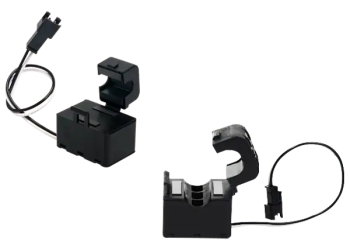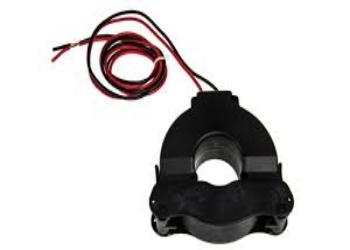
With the continuous progress of medical technology, personalized healthcare has become an important development direction in the current medical field. The clamp-type CT current sensor, as a new type of medical equipment, provides a new means for personalized medical treatment by measuring the distribution and changes of internal currents in the human body. This article will explore in detail the rise of clip-type current CT sensors in personalized medicine, analyze their applications in clinical diagnosis, treatment monitoring, and drug development, and look forward to their future development trends.

The working principle of clamp-type CT current sensor
The clamp-type CT current sensor operates based on Ampere’s law of the loop. It calculates the magnitude and direction of the present by measuring the magnetic field generated by the recent passing through the human body. Precisely, the sensor measures the electrophysiological signals of a specific part of the human body by clamping it with two electrodes. Due to the presence of conductive ions inside the human body, when an external current is applied, corresponding electric and magnetic fields are generated. The clamp-type CT current sensor has advantages such as being non-invasive, painless, and radiation-free, and can provide high-resolution and high-precision physiological parameters.

The application of clip-type CT current sensors in personalized medical care
- Clinical diagnosis
In clinical diagnosis, clamp CT current sensors have broad application prospects. For example, in the diagnosis of heart disease, the electrophysiological activity of myocardial cells can be measured using a clamp-type CT current sensor to determine the state of cardiac function. Monitoring the electrical activity of brain neurons can help detect diseases early and develop personalized treatment plans.
- Treatment monitoring
In terms of treatment monitoring, clamp CT current sensors also have essential application value. For example, in tumor radiation therapy, real-time tracking of the electrophysiological changes of tumor cells can be achieved through a clamp-type CT current sensor to evaluate the therapeutic effect. In addition, in drug therapy monitoring, clamp CT current sensors can be used to monitor the electrophysiological effects of drugs on targets, thereby optimizing drug therapy plans.
- Drug development
The emergence of clamp-type current CT sensors has provided new tools for drug development. Measuring the electrophysiological effects of drugs on organisms helps to discover new drug targets and accelerate the development process for new medicines.
The advantages and challenges of clamp-type CT current sensors
As a new type of medical equipment, clamp-type CT current sensors have many advantages. Firstly, it has the benefits of being non-invasive, painless, and radiation-free, and it can provide high-resolution and high-precision physiological parameters, providing new means for personalized healthcare. Secondly, the clamp-type CT current sensor can monitor the patient’s physiological status in real time, which helps detect diseases early and develop customized treatment plans.
However, clamp-type CT current sensors also face some challenges. Firstly, the manufacturing cost of the equipment is relatively high, and further cost reduction is needed to popularize its application. Secondly, the current application scope of this device is limited, mainly concentrated in certain specific disease fields. In addition, the accuracy and stability of the clamp-type CT current sensor still need further verification and optimization. To address these challenges, it is necessary to increase research efforts further and promote the continuous progress and improvement of technology.
Future Development Prospects of Clamp Type CT Current Sensors
With the continuous development of technology, clamp-type CT current sensors are expected to play a more extensive role in the future. Firstly, with the constant reduction of manufacturing costs and the continuous maturity of technology, clamp-type current CT sensors are expected to become popular in households and grassroots medical institutions gradually. This will enable more people to benefit from the personalized medical solutions provided by the device. Secondly, with the deepening of research, the application scope of this device is expected to further expand to more disease fields. For example, the application of clamp-type CT current sensors in neurological diseases, endocrine diseases, and other fields is expected to be further developed. In addition, by combining with other medical devices, the clamp CT current sensor is expected to achieve more comprehensive monitoring of physiological parameters and more accurate diagnosis and treatment. For example, when combined with imaging equipment, biochemical testing equipment, etc., it can provide more comprehensive medical information and provide strong support for doctors to enhance more accurate diagnoses and treatment plans.
High-quality Supplier
PDDN Optoelectronics Technology Co., Ltd. focuses on the research, development, and application of power electronics technology and is committed to supplying customers with high-quality transformers, thyristors, and other power products. Our company mainly has solar inverters, transformers, Epoxy Resin Insulators, Transformer Accessories, thyristors, diodes, radiators, and other electronic devices and semiconductor products. The electronic devices and semiconductor products provided by PDDN Optoelectronics Technology Co., Ltd. are efficient, safe, and reliable. They are widely used in power systems, industrial control, energy management, and other fields.
It accepts payment via Credit Card, T/T, West Union, and Paypal. PDDN will ship the goods to customers overseas through FedEx, DHL, by sea, or by air. Please inquire if you want high-quality transformer accessories; we will help.